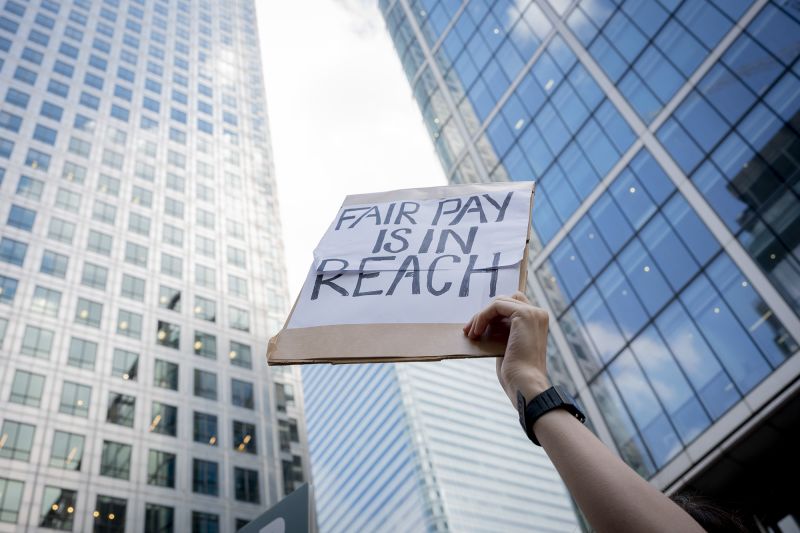Strikes sweep Britain as soaring inflation savages living standards

More strikes could be on the way this fall, threatening unprecedented disruption across a range of industries. Teachers, doctors and nurses are set to vote on strike action in the coming weeks. Unions could even coordinate their walkouts. Unite and Unison — the country’s biggest unions with 2.7 million members in total — are calling for others to join them in synchronized action.It is one of the most significant waves of industrial unrest the United Kingdom has seen since the “winter of discontent” in the late 1970s when rampant inflation pushed workers to stage mass walkouts. About 7.9 million working days were lost between November 1978 and February 1979, according to the Office for National Statistics. She has proposed raising the support threshold for strike action from 40% to 50% of votes cast, and extend the notice period to a month.”I will take a tough line on trade union action,” Truss told Sky News in July. Liz Truss’ leadership campaign declined to comment when contacted by CNN Business. “There’s quite an adversarial campaign from the side of the government to say well we’ll send agency workers to replace the workers on strike, or they should go back to work immediately, or there has already been a pay rise,” Manuela Galetto, associate professor of employment relations at the University of Warwick’s Business School, told CNN Business.Despite the obstacles, workers may feel more emboldened to strike at the moment, given the tight labor market, she said. UK unemployment was 3.8% between April and June this year, ONS data shows. That’s its lowest level in more than 50 years. There was also one unemployed person for every job vacancy — a record low. “It means that many workers are in work and they are in a good position to ask for [a pay] increase. They cannot be easily replaced [at a macro level],” Galetto said.







